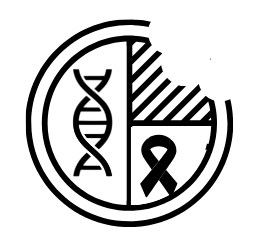Rachel Cherney
Most of us have been affected by cancer, whether we ourselves or someone we know has been diagnosed. It can be caused by various lifestyle habits, external or environmental factors, and genetics, and it’s extremely prevalent; as of 2015, 1 in 6 deaths worldwide was due to cancer. As described in a previous post, cancer occurs when the DNA in our cells mutate or change, due to replication errors, causing cells to divide more quickly, adapt harmful functions, and move throughout the body, disrupting bodily processes. The more cells we have, the more opportunities are there for cancer to arise and we also tend to see cancer diagnoses in older populations more frequently than younger populations. The older our cells are, the more likely they are to make mistakes, leading to cancer. Surprisingly, some of the largest (containing more cells) and longest living animals on Earth rarely get cancer, compared to rates in humans. So why is it that these large and long-living animals rarely get cancer, when humans and smaller animals do so much more frequently? The answer primarily comes down to genetics.
Our DNA is made up of genes that regulate how the body functions and what makes an individual unique, from hair, skin and eye colors, to the ability to identify certain tastes. We also have genes that protect against cancer (tumor suppressors), but can cause cancer when they are mutated. One such gene is TP53. This gene encodes a protein, p53, which functions to pause the cell cycle for repairing damaged DNA before a cell replicates and passes on the mutation. If DNA is too damaged to be repaired, p53 stimulates suicide pathways in the cell to prevent cancer from spreading. TP53 is the most frequently mutated gene in cancer, and humans only have one copy of this gene, so if it’s mutated, a strong defense against cancer has been lost.
 Elephants, on the other hand, have 20 copies of this gene! This means extra defense against cancer if one gene is mutated but the others aren’t, and also allows for more efficient DNA repair, helping elephants live long lives. Although extra TP53 copies are not the only improved defense elephants have against cancer, it is an intriguing one, and have led scientists to study the effect of increased gene copies on cancer rates.
Elephants, on the other hand, have 20 copies of this gene! This means extra defense against cancer if one gene is mutated but the others aren’t, and also allows for more efficient DNA repair, helping elephants live long lives. Although extra TP53 copies are not the only improved defense elephants have against cancer, it is an intriguing one, and have led scientists to study the effect of increased gene copies on cancer rates.
“Accelerated Regions” (ARs) are conserved regions of DNA that have an increased rate of nucleotide/base-pair substitutions. This allows the genomic region to adapt more quickly to changes in an organism’s body and environment. Scientists at the University of Utah – Salt Lake City recently looked at ARs in various animals, including elephants. The genomic region with the highest amount of AR in elephants is around the gene region of VRK2–FANCL-BCL11A, regulators of DNA repair and the aforementioned TP53 gene. This results in a pathway that not only allows for increased DNA repair adaptation but also increased regulation of the TP53 gene.
 Another large animal, the Bowhead whale, has one of the longest records of longevity in the animal kingdom, over 200 years. Just like elephants, this large and long-living creature hardly develops diseases and cancers until extremely advanced ages, if at all. How? Back to the genome. A study published by Cell in 2015 sequenced and examined the Bowhead whale genome, identifying many genes involved in cancer and aging within the top 5% of Bowhead whale specific genes (versions of genes specific to the Bowhead whale). Some include HDAC (epigenetic modifiers that affect genome structure and transcription – read here about epigenetics and cancer). The cell cycle regulator, PCNA, is duplicated, with one copy having Bowhead whale specific mutations, although the functions of this duplication are unknown.
Another large animal, the Bowhead whale, has one of the longest records of longevity in the animal kingdom, over 200 years. Just like elephants, this large and long-living creature hardly develops diseases and cancers until extremely advanced ages, if at all. How? Back to the genome. A study published by Cell in 2015 sequenced and examined the Bowhead whale genome, identifying many genes involved in cancer and aging within the top 5% of Bowhead whale specific genes (versions of genes specific to the Bowhead whale). Some include HDAC (epigenetic modifiers that affect genome structure and transcription – read here about epigenetics and cancer). The cell cycle regulator, PCNA, is duplicated, with one copy having Bowhead whale specific mutations, although the functions of this duplication are unknown.
These genomic differences between elephants, Bowhead whales, and humans allow scientists to identify possible genomic factors that can contribute to disease/cancer resistance and age-related diseases. While the genomic findings are only correlative and require more study, the potential applications are exciting. Animals could lead us to new therapies against cancer and give us insights into the process of aging by examining their genome and how they have evolved throughout time.
Work Discussed
Ferris, E., Abegglen, L. M., Schiffman, J. D., & Gregg, C. (2018). Accelerated Evolution in Distinctive Species Reveals Candidate Elements for Clinically Relevant Traits, Including Mutation and Cancer Resistance. Cell Rep, 22(10), 2742-2755.
Image Credits
Brian Snelson, Addo Elephant National Park
Olga Shpak, Bowhead Whale

